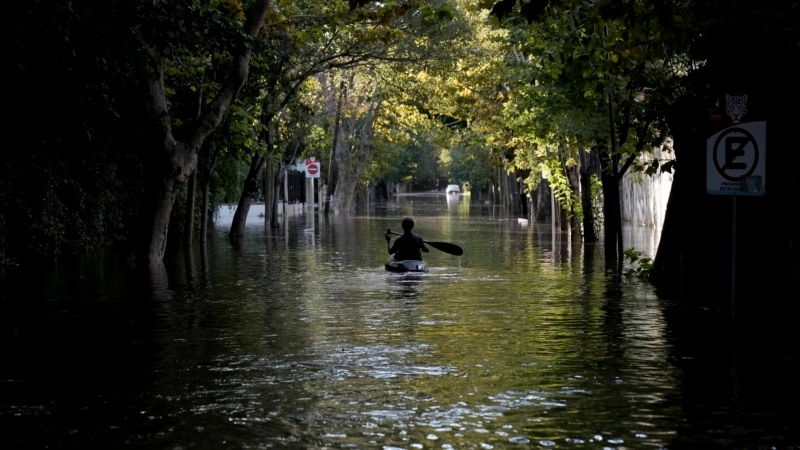Argentina is suffering severe flooding caused by the rain cycle that in recent days also left large-scale damage in Brazil and Uruguay. The Argentine coast has been flooded by this current that experts attribute to the combination of the El Niño phenomenon with others climatic factors in the region.
More than 560 people were evacuated in the city of Concordia, due to flooding caused by the flooding of the Uruguay River after flooding that took place in the Brazilian state of Rio Grande do Sul.
Dozens of residents of Concordia, located in the province of Entre Ríos – bordering Uruguay and very close to the south of Brazil – were traveling in canoes because in the riverside areas of the town there has been a strong growth of the Uruguay River bed. , which begins on the border between the states of Río Grande do Sul and Santa Catarina.
The governor of the Province of Entre Ríos, Rogelio Frigerio, where the city of Concordia is located, which has suffered serious damage and where the storms have truncated commercial and productive activity, said that they are waiting for the rain forecasts to improve to make facing reconstruction.
“Hopefully we are at the peak of the height of the river [Uruguay], we are waiting for the weather to be with us. We are very concerned about health, here with the Minister of Health, distributing medicines, especially concerned about heartburn. “We are containing people with the police and the army, distributing food at a very difficult time,” said the governor.
The official said that the damage caused by rain“but it is evident that many families live in very precarious situations,” which he related to the abandonment of previous governments.
Environmentalists demand mitigation works
Environmental associations claim a lack of necessary works against floods previously claimed as urgent to mitigate the effects of the climate change
“We have been warning you for more than 20 years (…) Unfortunately this flood is recurring, it is not the same as in Brazil, because what happened (there) was a tragedy, and here it is apathy. For 20 years we have been warning about it and fighting for a definitive solution, which is a central defense. We have made a lot of progress, but the project, which would be a solution, has been shelved,” said environmentalist Sebastián Bomtempo.
The emergency services deployed in the area include firefighters, police, Civil Defense and volunteers, who work 24 hours a day to help the victims and try to avoid outbreaks of endemic diseases in the area, a concern for health authorities.
The head of Civil Defense, Orlando Bertoni, said that the priority at this moment is to help the victims, prevent opportunistic diseases and distribute emergency aid to affected families in this first phase of the emergency.
“There were very strong winds that fell branches and downed cables and left the cities without electricity. The heavy rains in a short period of time have left serious flooding; in 40 or 50 minutes, between 200 and 300 millimeters fell in one day, leaving between 700 and 800 evacuees and self-evacuators,” Bertoni noted.
Experts attribute this cycle of storms to the El Niño phenomenon, which occurs every two to seven years in the Equatorial Pacific, but they warn of a worsening of conditions of excess rain or drought due to confluences with climate change.
[Con información de Juan Ignacio González Prieto, colaborador de la VOA en Buenos Aires, y The Associated Press]
Connect with the Voice of America! Subscribe to our channels Youtube, WhatsApp and to newsletter. Turn on notifications and follow us on Facebook, x and instagram.














Add Comment